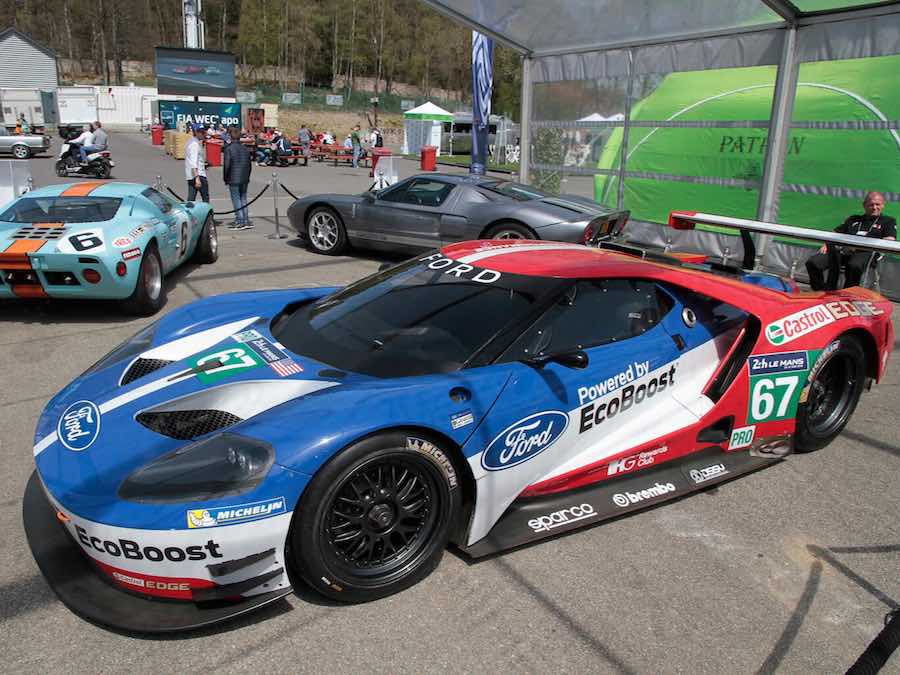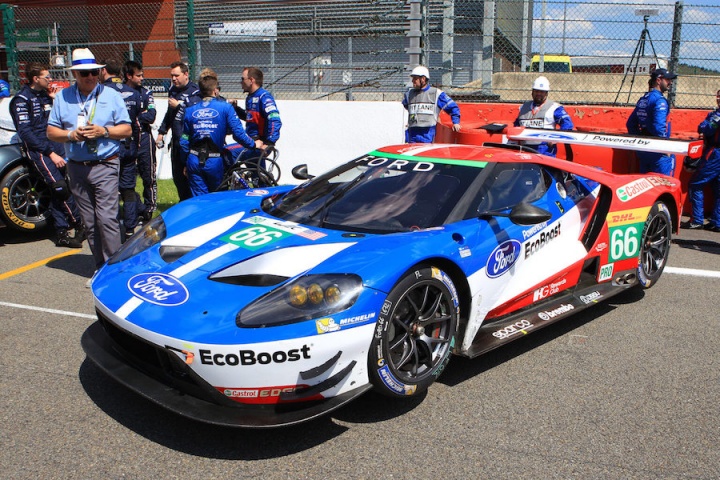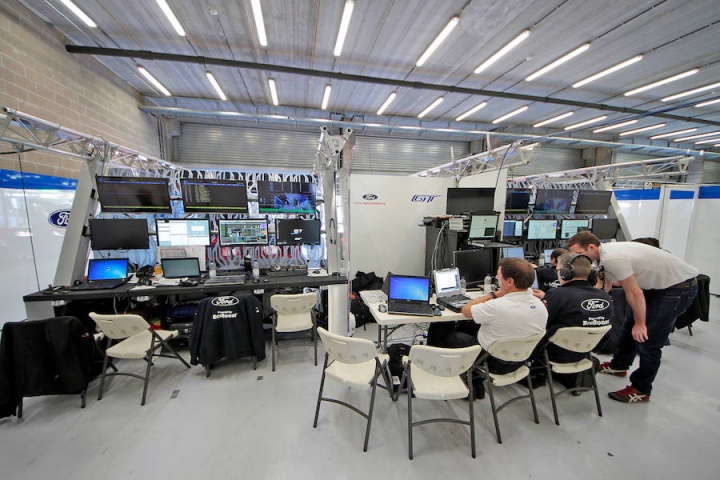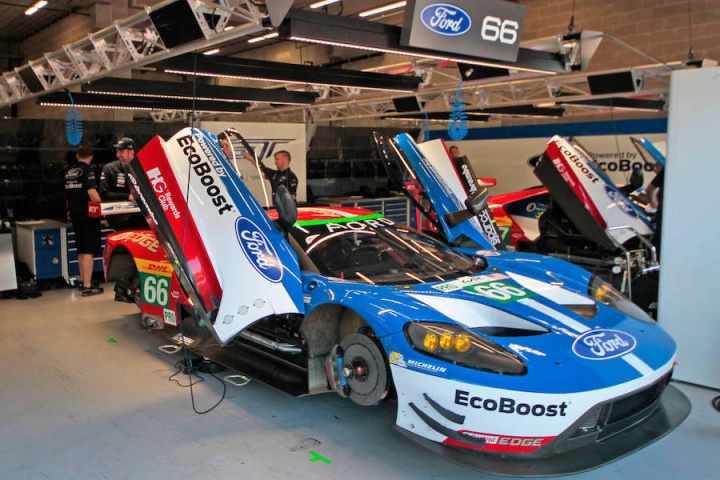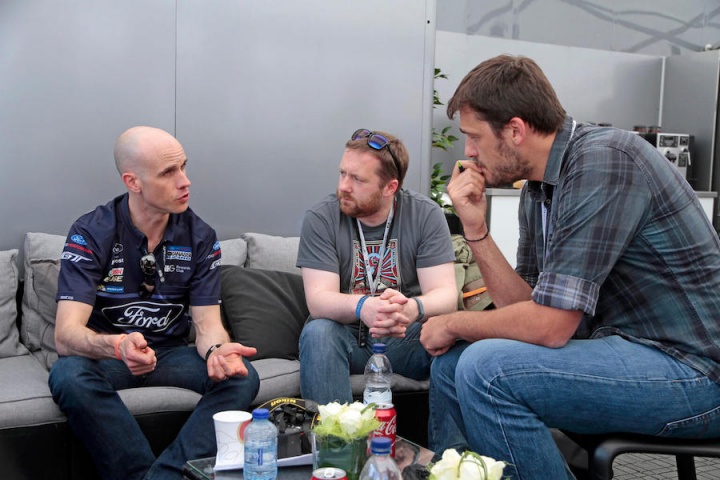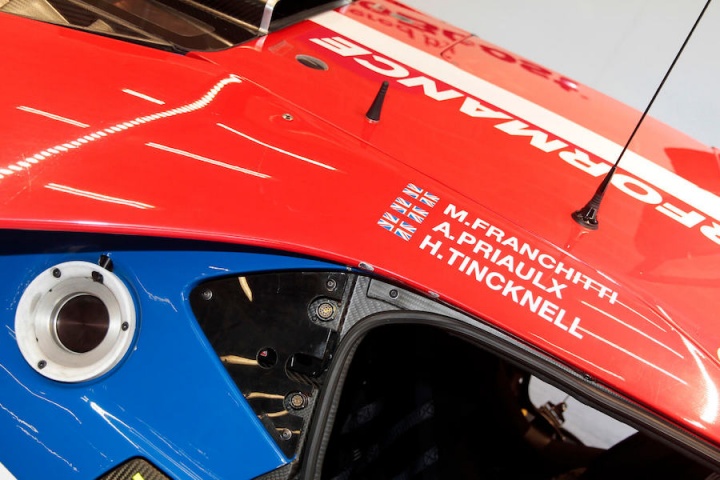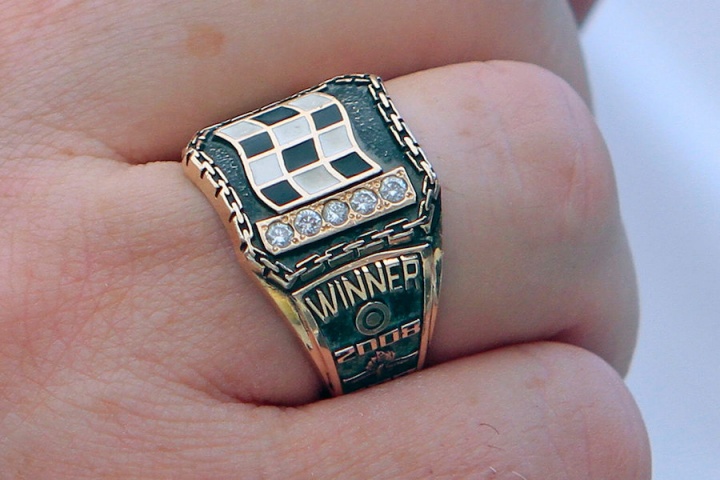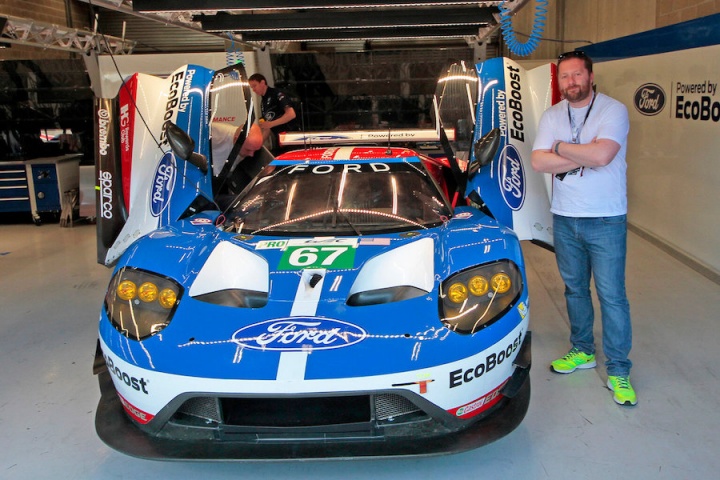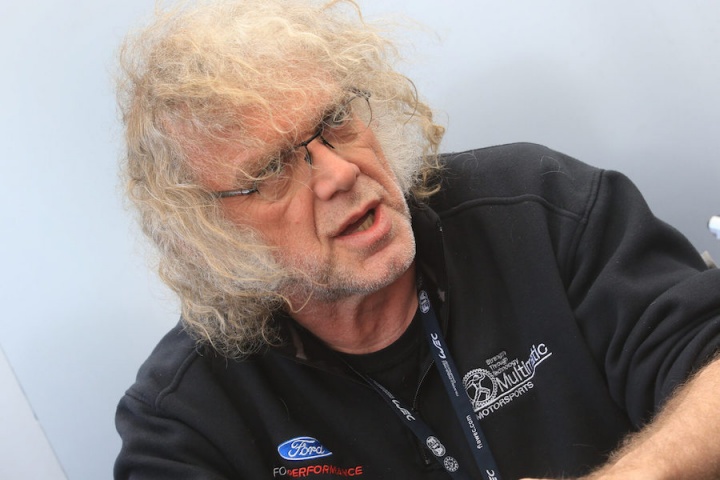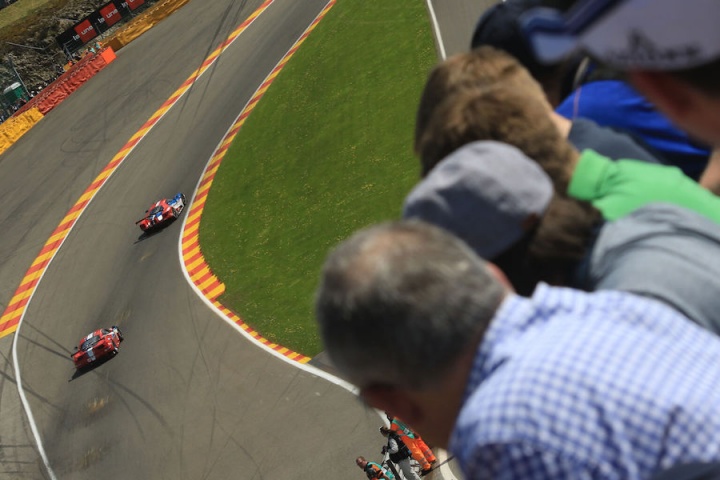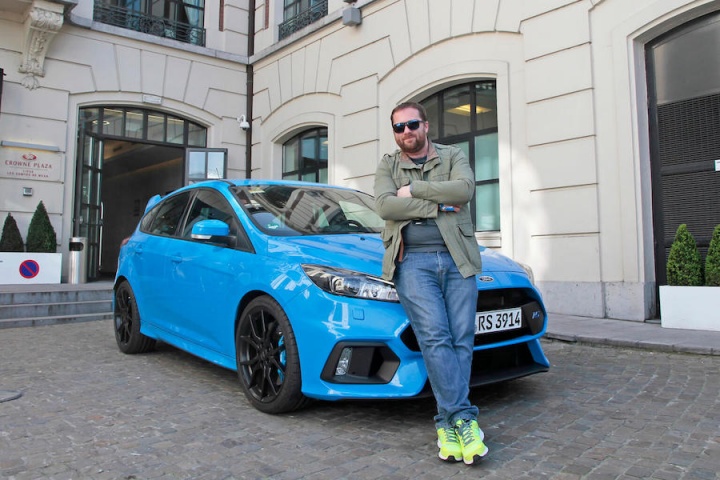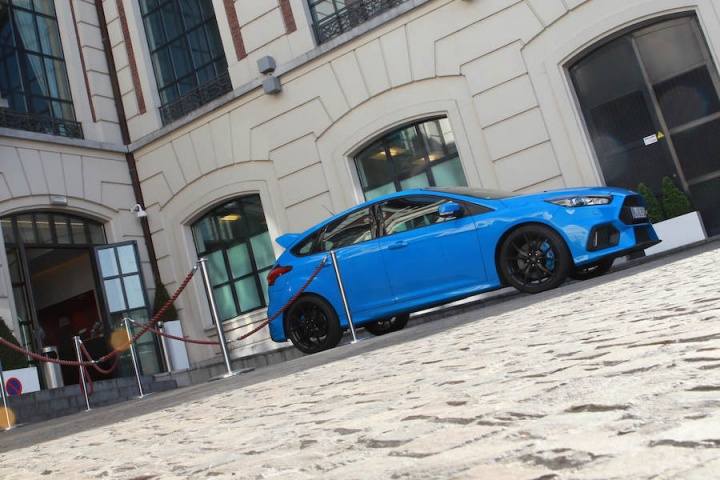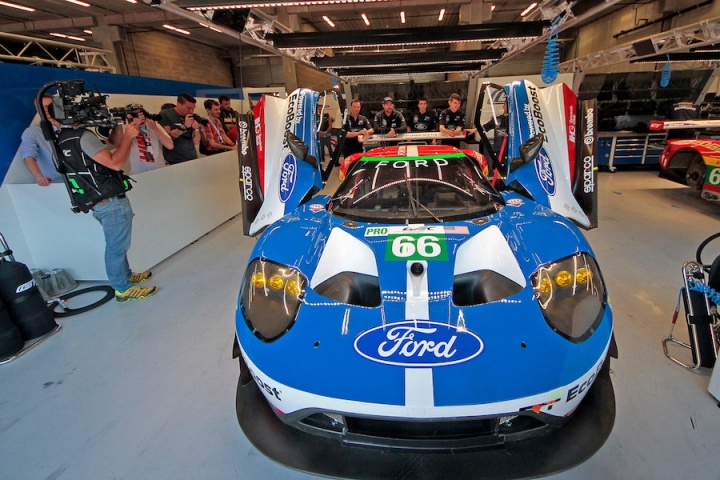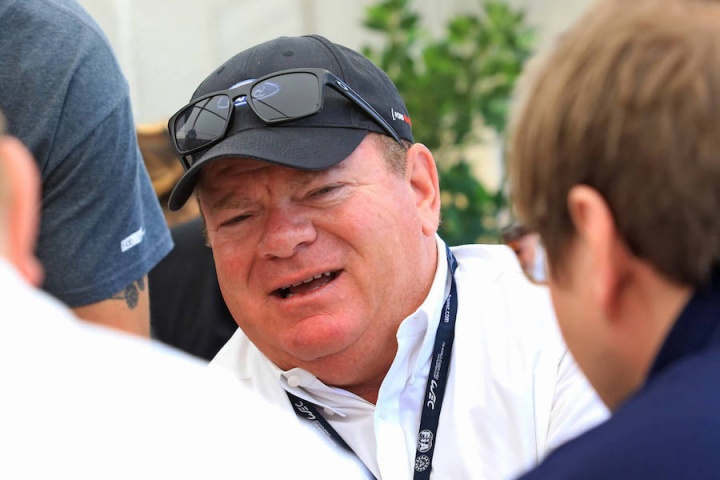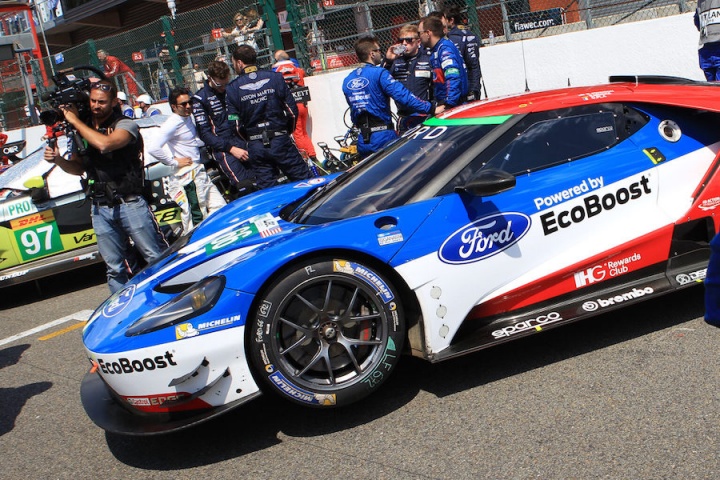This June will see the 84th running of the Le Mans 24-hour race. It will also mark 50 years since Ford took first, second and third places with its 7.0-litre V8-powered GT40 MkII sports cars. Fitting then that half a century on, Ford will once again head to the Circuit de la Sarthe with a full factory effort that will see four cars attempt to relive past glories.
The build-up includes the 6 Hours of Spa, which would be the final race before Le Mans. Ford has enjoyed a respectable opening season so far in its partnership with Chip Ganassi Racing. And what better way to help really get into the mood for some endurance racing than a road trip. Although the road-going version of the new Ford GT isn't quite ready yet, I had the next best thing, the Focus RS.
In its Nitrous Blue metallic paint the Focus RS looks incredible, even in an underground airport car park. The cold start in a low roofed basement is also the perfect aural treat to get you in the mood for a drive. Once the roundabout maze of Düsseldorf Airport had been negotiated it was straight onto the Autobahn towards Belgium. Two things strike you early on about the Focus RS on the motorway; its exhaust note is reminiscent of that from a Subaru boxer engine and it is really, really quick. It settles easily at higher speeds making 130km/h feel like nothing at all.
Nearing the more winding roads close to the Spa-Francorchamps circuit the Focus RS is in its element. That all-wheel drive system really is superb and is far more rewarding driving experience over competitor systems. Parked up in the main street not far from the circuit where I collect my accreditation and passes, the Ford turns a lot of heads and it's easy to see why when walking back to it.
With practice already underway the distant sounds of the different engines reverberating around the streets was something to experience. A quick five-minute drive to the circuit and the car park that overlooked turn 1 revealed a stunning view over the entire paddock and far enough to see the cars racing up the hill towards Raidillon. I knew this was going to be good.
The paddock setup for the World Endurance Championship (WEC) is no different in look to that of the Formula One world except for one big thing - accessibility. Yes, I may have had enough lanyards and wristbands to carry around constitute a cardio workout, but everyone can go almost everywhere in the WEC paddock. Mechanics talk to race fans at the backs of garages, drivers stroll around the paddock happily stopping for autographs and selfies. The whole vibe is far more relaxed than I have experienced in F1. And it's worth remembering that a large percentage of the drivers on the WEC grid are ex-F1 racers themselves. This alone is worth the cost of the entry ticket, which is also a lot less than you might expect - a weekend ticket with paddock access can cost as little as €45.
Watching the start of qualifying from Ford's suite at the bottom of the run uphill to Raidillon confirms that WEC drivers deserve serious respect. That hill might look steep on television but it is even steeper than that. And these drivers aren't lifting at all. I caught up with Ford's Marino Franchitti prior to the session and he explained how you can't see the left apex at the top of the hill; you just pick your point to turn in and usually it works. Okay then...
Having watched the drivers do their thing on track I was just as keen to get up close to the cars and have a closer look at what makes the Ford GT tick. This final round before Le Mans would also see most of the teams either running or experimenting with their Le Mans spec, with the Spa-Francorchamps circuit's high-speed straights helping to evaluate aero packages.
The garages in the Ford GT Racing team are part operating theatre, part NASA control room, with engineers in the back analysing banks of screens displaying all kinds of data. We were politely asked not to look too closely or take any photographs, as if I'd understand what I was looking at! Larry Holt, Vice President of Multimatic Engineering (the company tasked with developing both the race and road going Ford GTs) showed me around the car. He explained how unique it has been to develop both cars alongside each other, adding: "There were a lot of rumours that we made the race car first and then we made the road car, but that's not true. It's just not technically feasible due to the number of requirements that a road car has globally to be homologated for safety and emissions means it's just not possible to start with a race car and turn it into a road car, but what was unique is that they basically went parallel."
Speaking of how the two projects contributed to the different aspects brought up some interesting things about what to expect from the road car. Holt explains that the big challenge was to make the race car aerodynamically efficient, but that meant reducing the size of the frontal area, which is not a big deal on a racer, but it can have big implications in a road car. "Normally you benchmark the industry for best in class, engine, suspension, all those kinds of things. In this case we benchmarked the industry for worst in class. What can you get away with? It happens to be the Lotus Elise. So in our case the H-point to the centre line of the car is the same as a Lotus Elise. It complies with all the requirements but it's tight, and it gets our frontal area down quite significantly from our competitors'."
With 2016 being the 50th anniversary of Ford's success at Le Mans I had to ask the difficult question of what the pressure from Ford has been like to replicate that success this year. Larry is clearly a man that doesn't pull any punches: "You know this is my thirty first year running race teams and you always dream of a factory programme, but you should be careful what you ask for. There is big pressure, all the way to the top from the board, from Bill and Mark; they have a big expectation for this programme. I do point out quite often that because they're trying to replicate what happened in the Sixties, but Ford was at Le Mans in '64 and it was complete sh*t. They were there in '65 and they went very well and then had engine problems at the end. It was then their third year that they won that race. Three tries. So this year is the 50th anniversary so yeah it's absolutely huge pressure. On the other hand, the ACO has given us four entries (for Le Mans) so that gives us an advantage."
Looking around the car reveals a fascinating machine with aspects that are rarely captured on screen. Perhaps most interesting are the little details inside the cockpit like the complex arrangement of support cables that hold the seat belts in place during driver changes in pit stops. You can tell that every aspect of the car has been laboured over by people that have spent serious amounts of time analysing the best possible way to make that element work.
When race day comes around the grid is nothing short of pandemonium. There are what seems to be thousands crammed onto the grid, from drivers and mechanics to VIPs, dignitaries, celebrities and even an Irish motoring journalist. The sun is beating down - itself a strange occurrence at this track - and as promo staff fire t-shirt cannons into the grandstand I make my way to the car to watch the team prepare the final few minutes before the start.
Even though it is a six-hour race there is no messing around. Every last second is judged and each member of the team knows exactly what they have to do. If you haven't experienced endurance racing yet then fix that. As racing goes it blows Formula One out of the water, and I say that as a long-time devout F1 fan. Watching the different categories of car scythe their way through the slower packs is fascinating to watch. The LMP1 cars are the fastest and are blisteringly quick at every point on the circuit.
Throughout the six hours the drivers show nothing but full commitment, seeming to treat every lap like a qualifying one. Every second gained goes into the bank against any potential problem the car may experience later on in the race. It is fascinating to watch. But as racing can be a cruel sport, just after the fifth hour Stefan Mücke in the 66 Ford suffered a massive off at Raidillon that earned him a spell in the medical centre, but thankfully without any serious injury other than a decent headache. The sister car of Franchitti, Priaulx and Tincknell came home in a solid second place, which bodes well ahead of Le Mans.
Climbing back into the Focus RS for the blast back to Düsseldorf was the perfect way to round off a superb race weekend. Spending time with the Ford GT team and seeing and hearing their commitment makes me want them to taste success all the more in Le Mans. It really would be fairy-tale stuff were it to happen. And as Murray Walker says, anything can happen in racing and it usually does.

